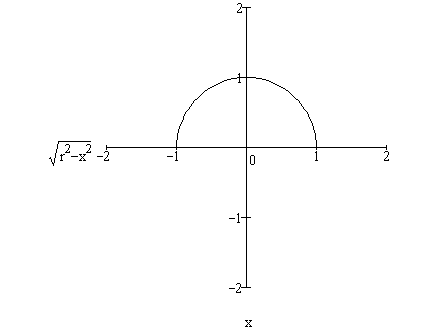| Have you found an error or do you want to add more
information to these pages? You can contact me at the bottom of the home page. |

| Area of a circle = 2r | ∫ | r | √( | 1 - | x2 | ) | dx |
| -r | r2 |
| 1 - | x2 | = 1 - | (r • sin θ)2 | = 1 - | r2•sin2θ | = 1 - sin2θ = cos2θ |
| r2 | r2 | r2 |
| x = r • sin θ, | dx | = r • cos θ, dx = r • cos θ dθ |
| dθ |
| 2r2 | ( | θ | + | sin(2θ) | ) | + C |
| 2 | 4 |
| = r2 | ( | θ + | sin(2θ) | ) | + C |
| 2 |
| 1 - | x2 | = 1 - | (r • sin θ)2 | = 1 - | r2•sin2θ | = 1 - sin2θ = cos2θ |
| r2 | r2 | r2 |
| 1 - | x2 | = cos2θ |
| r2 |
| cos θ = | √( | 1 - | x2 | ) |
| r2 |
| θ = arcsin | ( | x | ) |
| r |
| sin θ = | x |
| r |
| cos θ = | √( | 1 - | x2 | ) |
| r2 |
| r2 | ( | θ + | sin(2θ) | ) | + C |
| 2 |
| Have you found an error or do you want to add more
information to these pages? You can contact me at the bottom of the home page. |